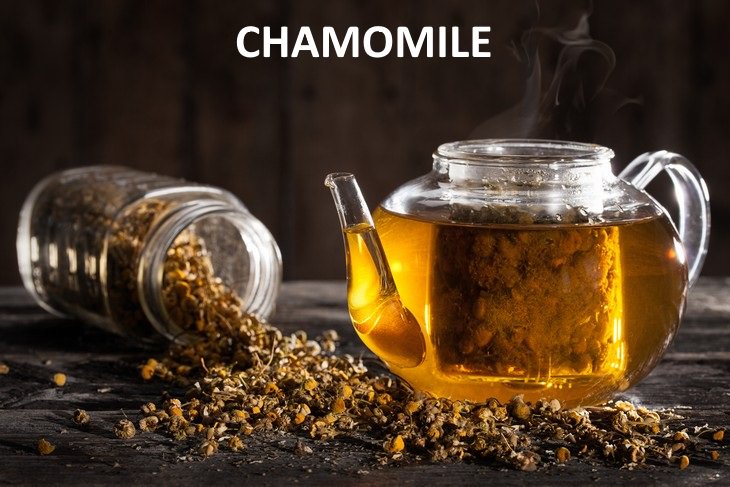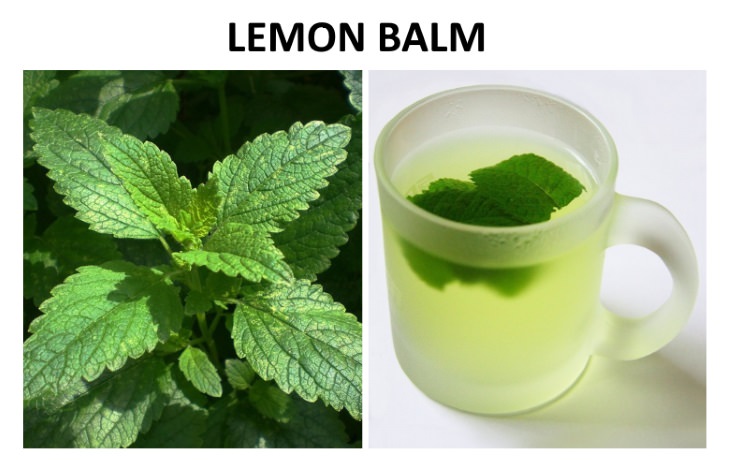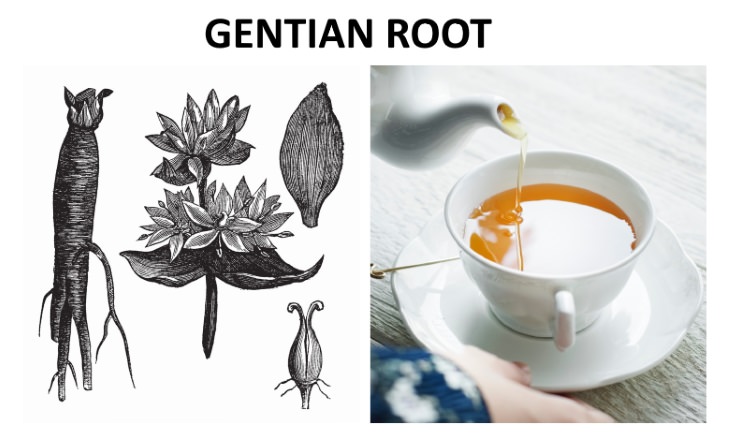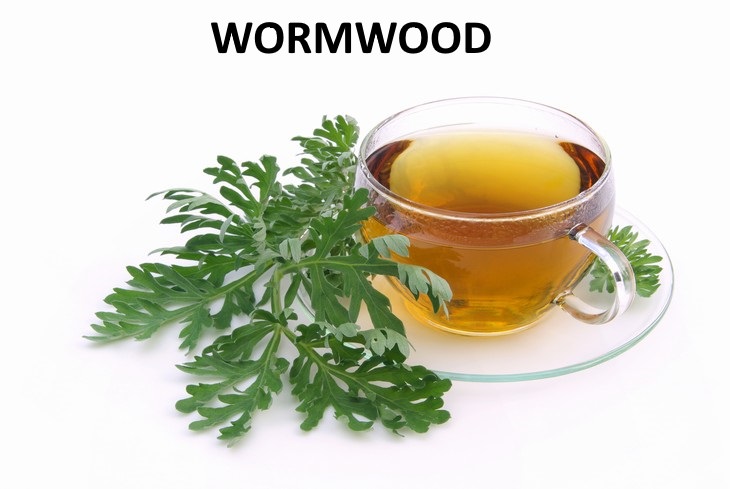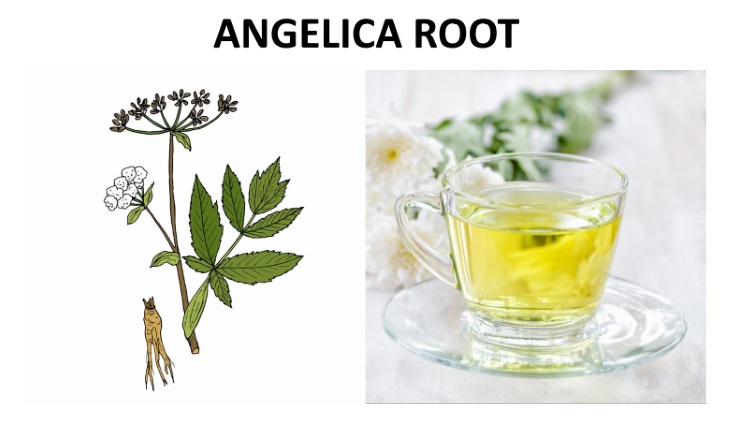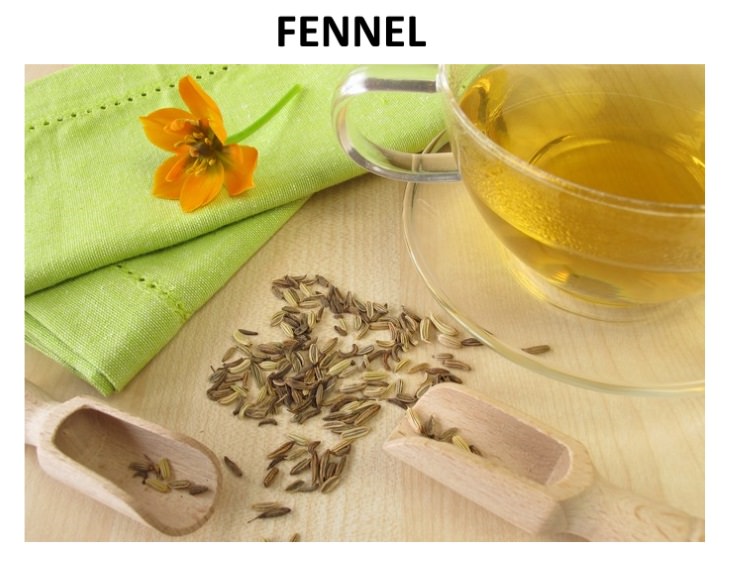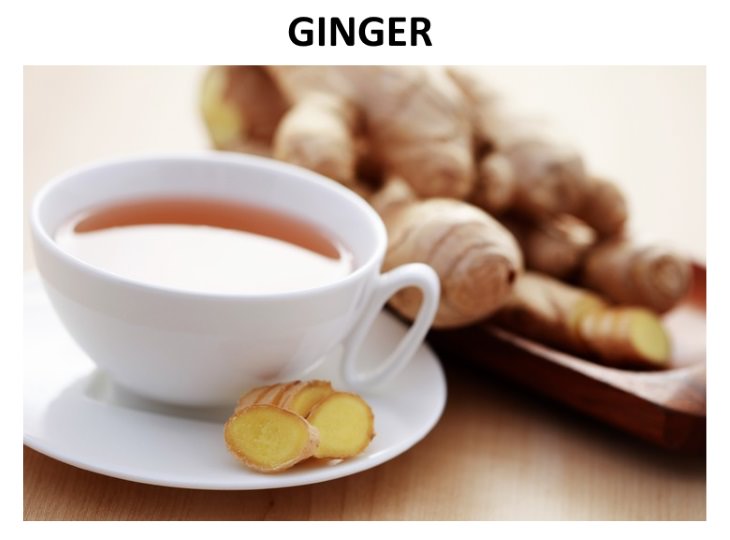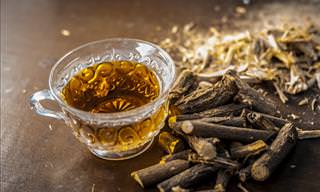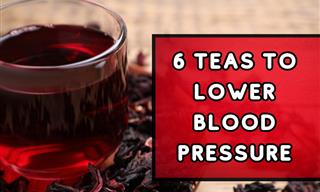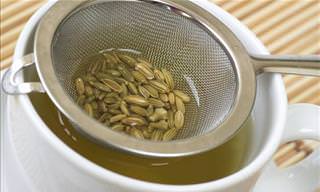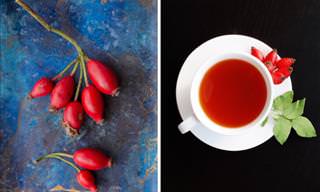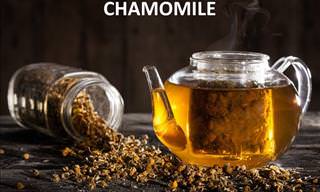1. Chamomile (Chamomillae romanae)
Chamomile tea is made from dried chamomile flowers brewed in hot water. The plant belongs to the daisy family, having the characteristic white flower petals and a bright yellow disk in the middle. Traditionally, chamomile is widely used to treat many digestive diseases:
- gas
- diarrhea
- nausea
- indigestion
- vomiting
- ulcers.
Research suggests that chamomile has antibacterial properties, preventing the growth of bacteria associated with ulcers and bloating. In addition, the flowers of the plant contain flavonoids, known for their potent antioxidant properties. That is why it is important to purchase high quality chamomile tea that that contains mostly flowers, and not the leaves or stems of the plant.
Chamomile tea has a pleasant, slightly sweet aroma and taste, and it can be easily prepared by brewing 1 tablespoon of dried chamomile in 1 cup (240 ml) of hot water for 10 minutes.
2. Lemon Balm (Melissa officinalis)
This plant can be easily mistaken for mint, as it belongs to the mint family, but it is slightly different, as it has a slight lemon taste and scent and flavor. The European Medicines Agency recognizes the potency of this plant to relieve gas and bloating, as well as other mild digestive problems.
This coincides with the traditional use of the plant, valued for its capacity to treat a variety of digestive symptoms. Much like mint, lemon balm tea usually contains the leaves of the plant, usually sold in dried form. The preparation is identical to that of chamomile tea.
3. Gentian Root (Gentiana lutea)
Gentian root is less widely known than the previous herbs on the list, despite the fact that the plant it comes from, called the yellow gentian, grows all over Europe. Traditionally, the root of this plant was used in medicinal preparations that targeted bloating, gas, and similar issues.
It is known that gentian root contains bitter plant compounds, such as iridoids and flavonoids. Apart from their antioxidant potential, these compounds stimulate digestion, which can also help relieve bloating.
In terms of taste, pure gentian tea is rather bitter, which is why it is usually sold or mixed with other herbs, such as chamomile, as well as honey. Preparation: Add ¼ - ½ teaspoon (1-2 grams) of dried gentian root powder to a cup of hot water and steep it for 10 minutes.
4. Wormwood (Artemisia absinthium)
This leafy green plant is widely-used by humans, although it is mostly associated with the preparation of absinth or to decorate your garden. What you might have not known is that the leaves of this plant were used for centuries to prepare a bitter tea capable of treating indigestion.
A 2015 study reported that only 1 gram of dried wormwood powder is capable at preventing or relieving indigestion by causing the release of digestive juices. So, similarly to gentian root, the bitters in wormwood may aid bloating, too.
Another study also suggested that wormwood may contain antiparasitic properties, which can also be the cause behind bloating. Keep in mind, that you should avoid wormwood during pregnancy, as a compound in wormwood called thujone may generate uterine contractions.
In terms of preparation, bitter wormwood tea is best complemented by lemon and honey. Only 1 teaspoon (1.5 grams) of the dried herb will suffice to prepare a cup of tea, and it is only necessary to brew it for 5 minutes in hot water.
5. Angelica Root (Angelica archangelica)
This plant is closely-related to celery and has been used in Chinese medicine for a long time, but there it is known under the name of dong quai. In traditional Austrian medicine, the roots of the plant are used to treat a variety of diseases of the gastrointestinal tract.
Research confirms some of these uses, as it has been suggested that it can relieve constipation and bloating. The use of the root during pregnancy is under question. The root is usually sold dried or powdered, and it has a bitter taste.
Brew around 1 teaspoon of the root in a cup of water for 5 minutes to prepare the tea.
6. Fennel (Foeniculum vulgare)
Fennel is a very popular ingredient in cuisine, with both the seeds and the roots of the plant being used up for different purposes. The plant is very aromatic and has a pleasant flavor and taste. Traditionally, fennel seeds are used to combat abdominal pain, constipation, bloating and gas.
A study conducted on elderly patients showed that individuals suffering from chronic constipation who drank a serving of herbal tea with fennel daily had 4 more bowel movements than the control group in just a 28-days. Constipation is one of the leading causes of bloating, and improving this condition will usually also make bloating go away.
Another study showed that fennel can prevent ulcers, which is another risk factor of chronic bloating.
Apart from their medicinal value, fennel tea is quite pleasant to the taste, with many comparing its sweet aromatic taste to licorice.
To prepare the tea, use 1-2 teaspoons of crushed fennel seeds and steep them for 10-15 minutes in a cup of hot water.
7. Ginger (Zingiber officinale)
You will most likely recognize the thick roots of the ginger plant, but you may not know that they have been used in traditional medicine to treat stomach issues since the dawn of humanity.
Studies support the use of ginger, too, with one study showing that it can relieve nausea, and another one suggesting that ginger supplements aid digestion, reduce intestinal pain and cramping, relieve bloating and gas. This miracle worker has a pleasant warming flavor and it can either be brewed alone, or combined with lemon, honey and other herbs.
If you’re using dried ginger, only ¼ - ½ teaspoon will suffice to prepare a cup of ginger tea. Steep the hot water and ginger mixture for 5 minutes. If you’re working with fresh ginger, around 1 tablespoon of the finely-sliced root will be enough to make 1 cup of ginger tea, but keep in mind that fresh ginger takes longer to brew, around 10 minutes.
8. Peppermint (Mentha piperita)
This herb needs no introduction, as most of us are familiar with its cooling, refreshing smell and taste. Apart from being used in gum, mojitos and mint-chocolate, peppermint is a recognized treatment of digestive diseases in traditional medicine.
Peppermint is capable to relax spasms in the gut, which can relieve bloating and abdominal pain. It also contains flavonoids, which can reduce bloating. To make peppermint tea, you can use the prepackaged variety. Alternatively, use 1 tablespoon of dried peppermint leaves or 3 tablespoons of fresh leaves to make a cup of tea. Let the tea steep in hot water for 10 minutes before drinking.
 Go to BabaMail
Go to BabaMail


